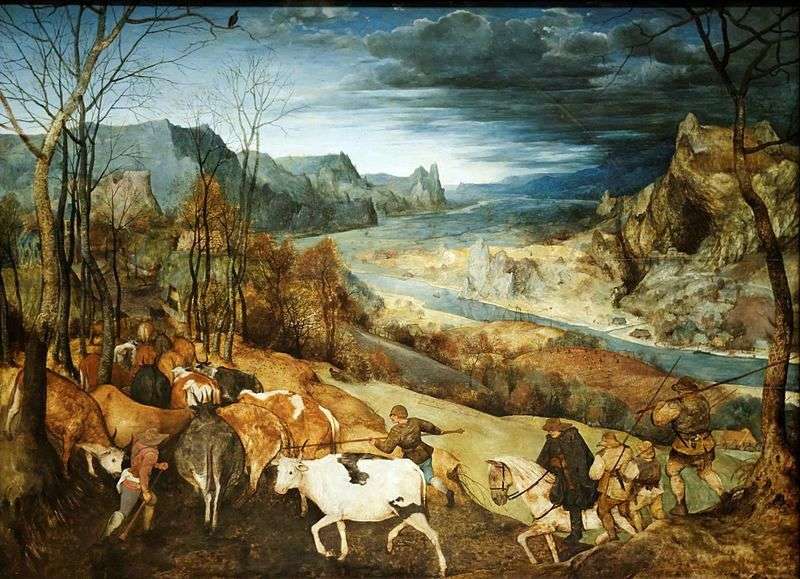
In this picture, the artist showed a transition period from autumn to winter. In the summer the herd was grazing in the hills, and now a group of people in the hollows and valleys is driving it down to the village. We see it behind the trees. Behind the village, like the testimony of long ago, a dilapidated fortress rises. Near the trees are already naked, their branches look like a transparent grid.
The herd drives the drovers. The most important of them, riding on horseback, wrapped himself in a warm cloak and lowered his hat low over his forehead, as if with human winter’s stupor the human life died. But the other characters are in a hurry. Therefore, it is sometimes suggested that Bruegel did not show a return, but stealing herds.
The movement of the herd at first glance seems chaotic. But in fact it plays an important role in the whole composition of the picture. The herd is near, but there is a feeling that we are looking at it from afar.
On the gentle slope of the hill there are bird snatchers set up to catch birds. On a hill by the river, people are busy harvesting grapes. And on the hill next to – a gallows.
Calm, but the cold blue-gray river is already cold. Mountains on that shore approach the river so close that only a narrow strip of land remained. But man here has also managed to build a home. To the left, too, mountains, but a completely different nature. They resemble the Vosges that Bruegel saw in his youth, while traveling to Italy.
The landscape is very bright. In the foreground there are dark colors, on the slope there are different shades of red vineyards, yellow-red shore. The artist used equally rich colorful combinations even when he wrote the sky. It is evening now. The last rays of the sun still illuminate a part of the sky with even light, but the sky is gradually drawn out by dark clouds, becoming blue-gray.
One of the most remarkable details of the picture is the black branches of the naked tree against the background of the blue sky. Perhaps, it is best to see here that Bruegel seeks to show not the pulse of life in nature, but, on the contrary, the coming numbness, by the brightness and contrast of colors. It overtakes nature in the heyday of its beauty.
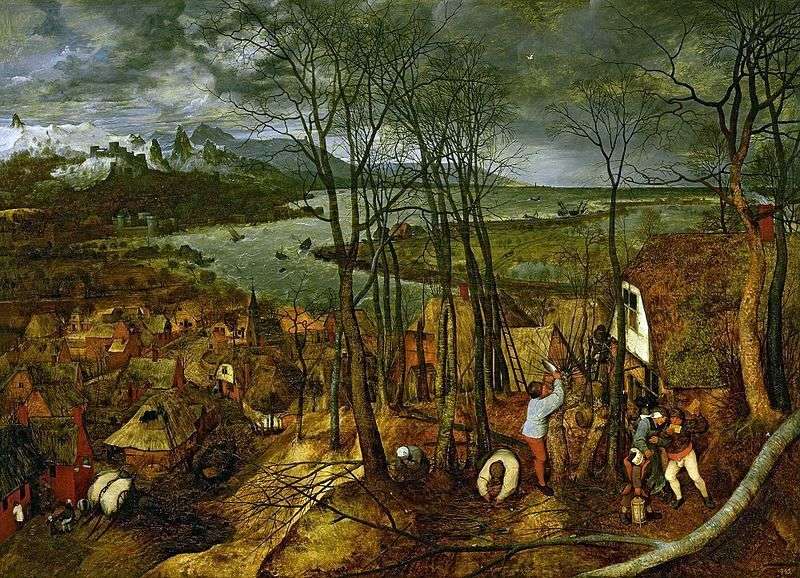 Cloudy Day by Peter Brueghel
Cloudy Day by Peter Brueghel The Parable of the Sower by Peter Brueghel
The Parable of the Sower by Peter Brueghel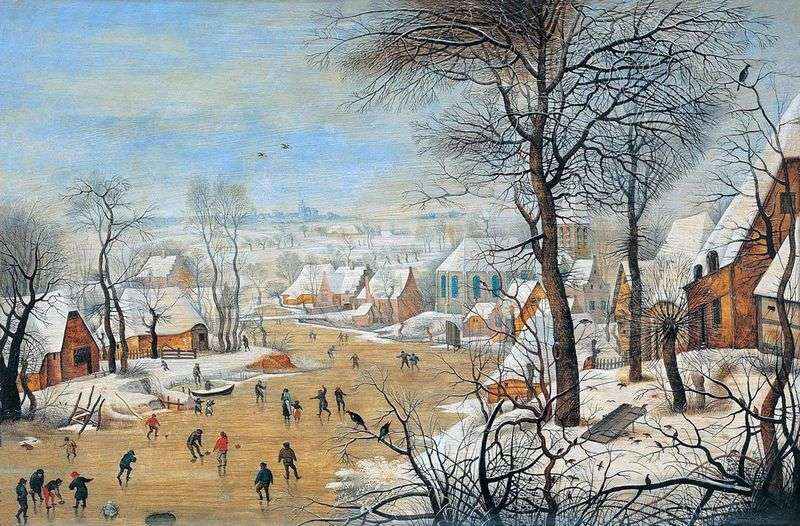 Landscape with skaters and a trap for birds by Peter Brueghel
Landscape with skaters and a trap for birds by Peter Brueghel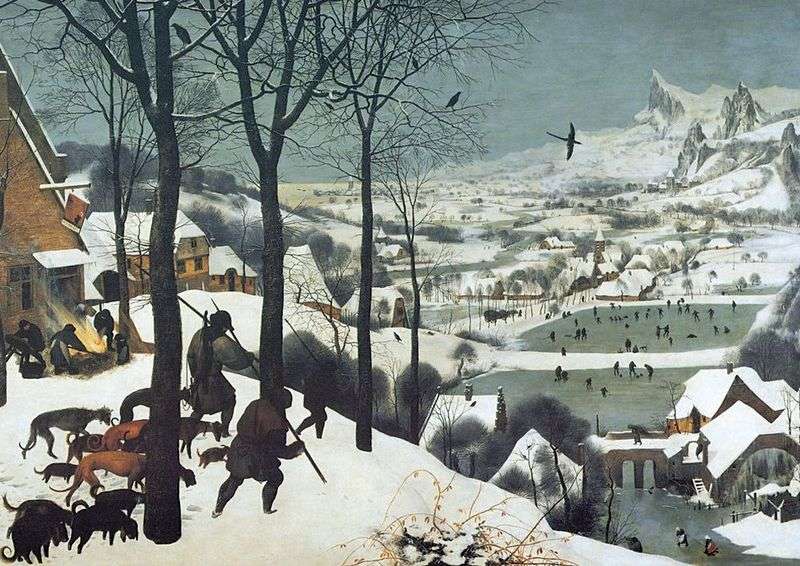 Hunters in the snow by Peter Brueghel
Hunters in the snow by Peter Brueghel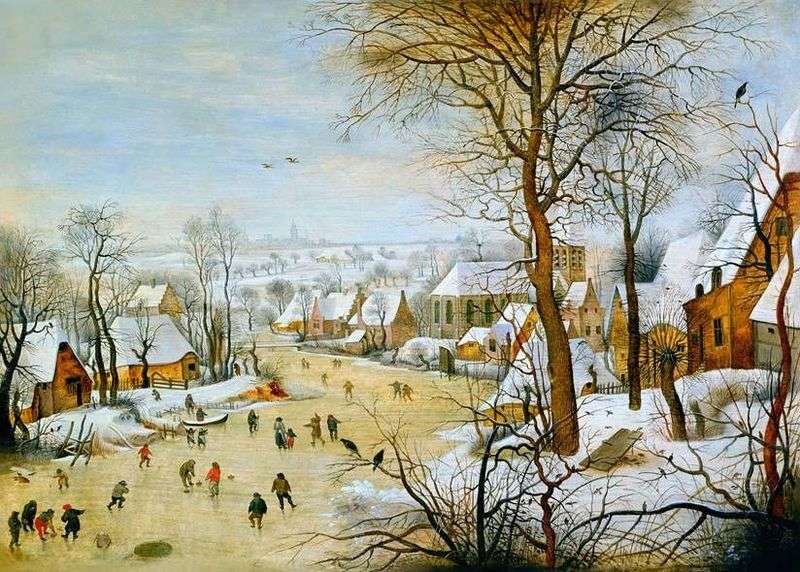 The Bird Trap by Peter Brueghel
The Bird Trap by Peter Brueghel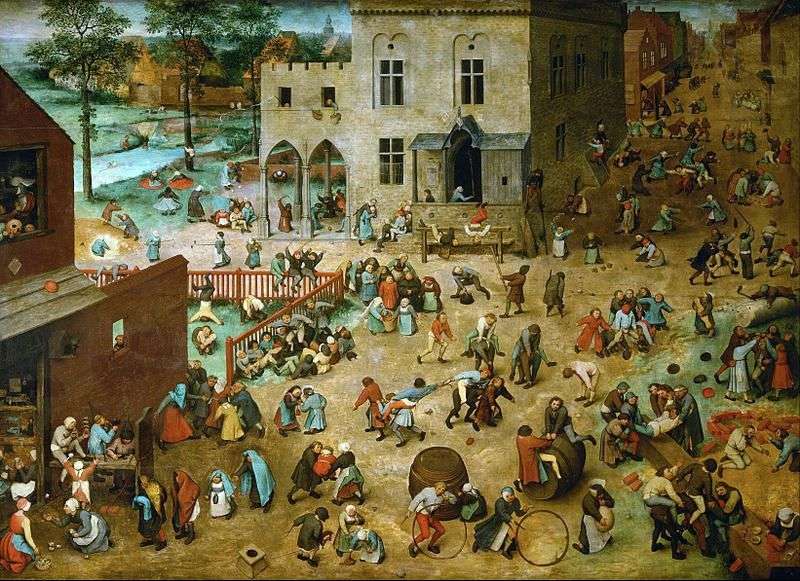 Kids Games by Peter Brueghel
Kids Games by Peter Brueghel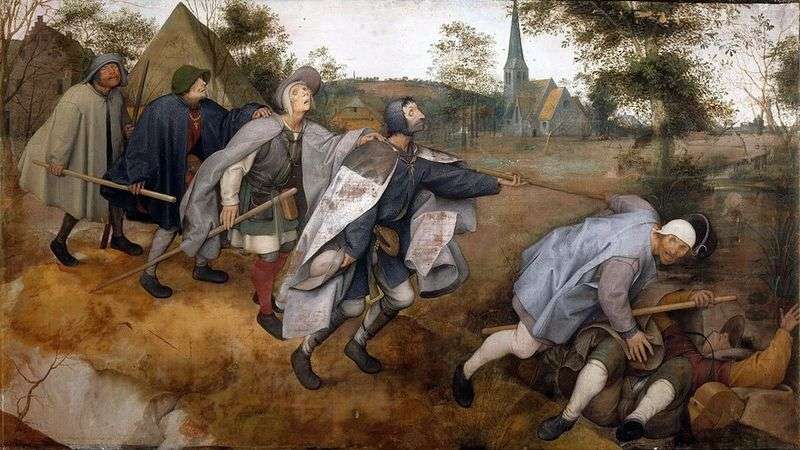 The Parable of the Blind by Peter Brueghel
The Parable of the Blind by Peter Brueghel Harvest Summer by Peter Brueghel
Harvest Summer by Peter Brueghel